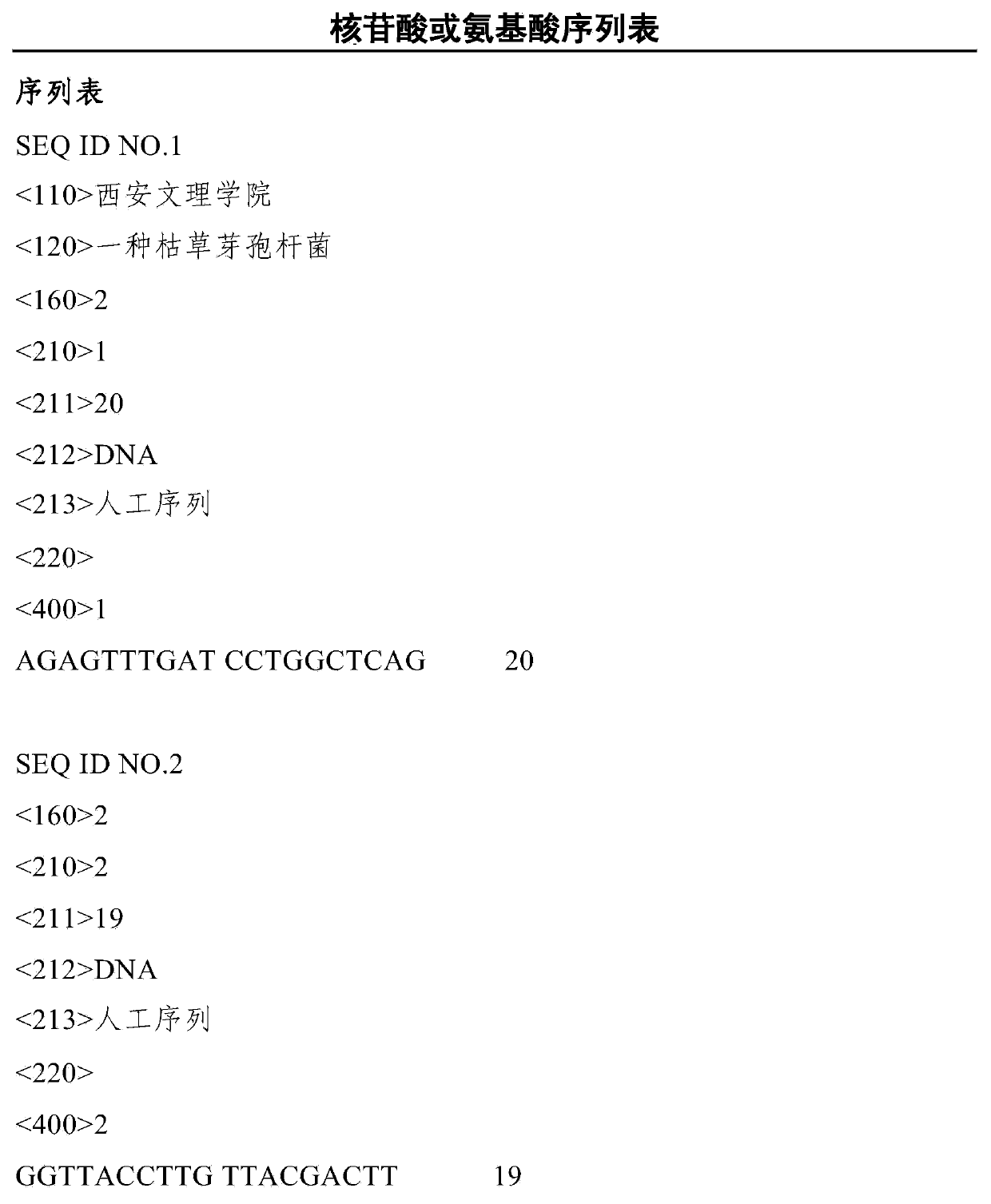Bacillus subtilis
A Bacillus subtilis, preservation number technology, applied in the field of bioengineering, can solve the problems of slow degradation of soil organic phosphorus, long duration of treatment process, etc.
- Summary
- Abstract
- Description
- Claims
- Application Information
AI Technical Summary
Problems solved by technology
Method used
Image
Examples
Embodiment Construction
[0029] Screening of strains:
[0030] Step 1. Enrichment: Collect about 100g of soil samples from the fig orchard of the Biotechnology College of Xi'an University of Arts and Sciences in Yanta District, Xi'an City. Aseptically weigh 10.0 g of the soil sample and put it into a 250 mL Erlenmeyer flask containing 100.0 mL of enrichment medium (sterilized), and enrich and cultivate it at 30°C and 140 r / min on a constant temperature shaker for 5 days; then absorb 5 mL of culture medium The solution was re-transferred into a fresh enrichment medium, and enrichment culture was carried out 3 times, each time for 5 days; the composition of the enrichment medium was: glucose 3.506g, peptone 0.83g, yeast extract 0.5g, diphosphate Potassium hydrogen 0.35g, calcium carbonate 0.25g, lecithin 0.02g, distilled water 1000mL, medium pH 6.8-7.1, sterilized at 105KPa for 20min-25min;
[0031] Step 2, screening and purification: Dilute the enriched culture solution after 3 enrichment cultures in ...
PUM
 Login to View More
Login to View More Abstract
Description
Claims
Application Information
 Login to View More
Login to View More - R&D
- Intellectual Property
- Life Sciences
- Materials
- Tech Scout
- Unparalleled Data Quality
- Higher Quality Content
- 60% Fewer Hallucinations
Browse by: Latest US Patents, China's latest patents, Technical Efficacy Thesaurus, Application Domain, Technology Topic, Popular Technical Reports.
© 2025 PatSnap. All rights reserved.Legal|Privacy policy|Modern Slavery Act Transparency Statement|Sitemap|About US| Contact US: help@patsnap.com

